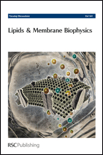
FARADAY DISCUSSIONS
Scope & Guideline
Advancing Knowledge Through Scholarly Dialogue
Introduction
Aims and Scopes
- Theoretical Development in Chemistry:
The journal consistently publishes papers that advance theoretical frameworks in chemistry, including quantum mechanics, molecular dynamics, and computational modeling. This includes novel algorithms and computational techniques that enhance the accuracy and efficiency of chemical predictions. - Experimental Techniques and Applications:
FARADAY DISCUSSIONS showcases a range of experimental methodologies, from spectroscopy to microscopy, that are used to investigate complex chemical systems. This includes advancements in in situ and operando techniques that allow real-time observation of chemical processes. - Interdisciplinary Research:
The journal encourages interdisciplinary approaches that merge chemistry with fields such as materials science, biochemistry, and nanotechnology. This broad focus fosters innovative solutions to global challenges such as energy storage, catalysis, and environmental sustainability. - Biocatalysis and Green Chemistry:
There is a significant emphasis on biocatalysis and sustainable chemical processes. The journal highlights research that aims to develop eco-friendly methods for chemical synthesis and transformation, contributing to the field of green chemistry. - Machine Learning and Data Science in Chemistry:
FARADAY DISCUSSIONS features a growing number of papers that apply machine learning and data science techniques to chemistry. This includes predictive modeling, data mining, and the development of algorithms that aid in materials discovery and reaction optimization.
Trending and Emerging
- Machine Learning and Artificial Intelligence:
There is a marked increase in publications that apply machine learning techniques to chemical problems, including materials discovery and reaction prediction. This trend indicates a growing integration of AI in chemical research, enhancing predictive capabilities and efficiency. - Sustainable and Green Chemistry:
Research focused on sustainable practices, particularly in catalysis and biocatalysis, is gaining momentum. This reflects a global shift towards environmentally friendly processes and materials, emphasizing the importance of sustainability in chemical research. - Nanotechnology and Materials Science:
Emerging themes in nanotechnology and advanced materials, particularly those that explore the properties and applications of 2D materials and nanostructures, are becoming increasingly prominent. This trend aligns with broader scientific interests in developing innovative materials for various applications. - Interfacial Chemistry and Surface Science:
There is an increasing focus on the chemistry of interfaces and surfaces, particularly in relation to energy storage and conversion technologies. This trend is crucial for advancing applications in batteries, catalysis, and sensor technologies. - Integrated Experimental and Computational Approaches:
The trend towards integrating experimental techniques with computational modeling is on the rise. This approach enhances understanding of complex chemical systems and facilitates the design of new materials and reactions.
Declining or Waning
- Traditional Organic Chemistry:
There is a noticeable reduction in papers focused solely on traditional organic synthesis methods, such as classical reaction mechanisms and synthetic routes. This may indicate a shift towards more innovative and interdisciplinary approaches that incorporate modern techniques. - Basic Inorganic Chemistry:
Research centered on fundamental inorganic chemistry, particularly studies that do not integrate advanced techniques or applications, has seen a decline. This suggests a growing preference for studies that link inorganic chemistry with practical applications in materials or catalysis. - Classical Spectroscopy Techniques:
While spectroscopy remains essential, there is a waning focus on classical techniques without the integration of advanced computational or imaging methods. The trend indicates a move towards more sophisticated and hybrid techniques that provide richer data. - Single-Field Studies:
Papers that focus narrowly on a single aspect of a chemical phenomenon without cross-disciplinary insights are appearing less frequently. This suggests a trend towards more holistic approaches that consider multiple interacting factors.
Similar Journals
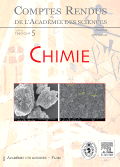
COMPTES RENDUS CHIMIE
Innovating Chemistry: Your Gateway to Cutting-Edge Research.COMPTES RENDUS CHIMIE, published by the prestigious Académie des Sciences in France, stands as a significant journal in the fields of chemistry and chemical engineering. With an ISSN of 1631-0748 and an E-ISSN of 1878-1543, this open-access journal has been committed to disseminating high-quality research since its transition to open access in 2020. Featuring a diverse array of studies, the journal covers innovative research trends and applications, while maintaining a Q3 category ranking in both Chemical Engineering (miscellaneous) and Chemistry (miscellaneous) as of 2023. Its Scopus rankings, positioning at #251 out of 408 in general chemistry and #169 out of 273 in general chemical engineering, highlight its growing impact within the scientific community. Authored by a global cohort of scientists and researchers, COMPTES RENDUS CHIMIE is dedicated to the advancement of knowledge and sharing insights that are vital for ongoing research and development in the chemical sciences. Located in the heart of Paris at 23 Quai de Conti, 75006, France, the journal is an essential resource for those passionate about chemistry and engineering disciplines, fostering collaboration and innovation across the world.
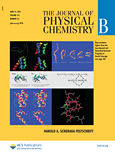
JOURNAL OF PHYSICAL CHEMISTRY B
Illuminating the Path of Materials ChemistryJournal of Physical Chemistry B, published by the American Chemical Society, is a leading international platform dedicated to advancing our understanding of physical chemistry and its applications in various interdisciplinary fields. With an impressive 2023 Impact Factor, and categorized in Q1 for Physical and Theoretical Chemistry as well as Surfaces, Coatings and Films, this journal showcases cutting-edge research that contributes significantly to materials science, supporting the innovative development of new materials and technologies. The journal, established in 1997 and converging its years of publication to 2024, maintains rigorous peer-review standards and is accessible to a global audience, enabling the dissemination of pivotal research findings. Moreover, it is renowned for its comprehensive coverage in the realms of materials chemistry and miscellaneous medical applications, making it a vital resource for researchers, professionals, and students alike in their pursuit of excellence in scientific inquiry.
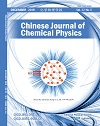
CHINESE JOURNAL OF CHEMICAL PHYSICS
Unveiling Breakthroughs in Chemical Physics ResearchChinese Journal of Chemical Physics, published by the Chinese Physical Society, serves as a pivotal platform for advancing the field of chemical physics, encompassing groundbreaking research and innovative methodologies since its inception in 2000. With an ISSN of 1674-0068 and E-ISSN of 2327-2244, the journal has established itself within the academic community, reflected in its 2023 classification as Q3 in Physical and Theoretical Chemistry and a Scopus rank of #142 out of 189, representing the 25th percentile in this competitive field. Although it does not currently operate as an open-access publication, its commitment to disseminating pivotal scientific research continues to attract scholars and professionals alike. The journal aims to bridge the gap between theoretical principles and practical applications in chemical physics, thereby fostering collaboration and innovation. By contributing significantly to the discourse in this dynamic domain, the Chinese Journal of Chemical Physics remains an essential resource for researchers, professionals, and students eager to stay abreast of contemporary developments.
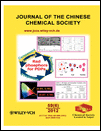
JOURNAL OF THE CHINESE CHEMICAL SOCIETY
Connecting Researchers with Pioneering DiscoveriesJOURNAL OF THE CHINESE CHEMICAL SOCIETY, published by WILEY-V C H VERLAG GMBH, is a vital resource in the field of chemistry, focusing on a broad array of topics pertinent to general chemistry and its advancing sub-disciplines. Established in 1954 and running through 2024, this journal serves as a significant platform for the dissemination of high-quality research, showcasing innovative findings and developments within the chemical sciences. With its Q3 category ranking and positioning at Rank #203 in General Chemistry per Scopus, it reflects the journal's commitment to research excellence and impact. While not an open-access publication, it ensures accessibility to a global audience, making it an essential tool for researchers, professionals, and students alike seeking to stay informed and engaged in the evolving landscape of chemistry.

Journal of Physical Chemistry Letters
Empowering Scientific Inquiry Across Chemistry DomainsThe Journal of Physical Chemistry Letters, published by the American Chemical Society, is a premier journal in the fields of Physical and Theoretical Chemistry, Materials Science, and Nanoscience and Nanotechnology. Since its inception in 2010, this journal has established itself as a significant platform for rapid publications of cutting-edge research that bridges various branches of chemistry, providing a critical avenue for advancing knowledge in these dynamic fields. With an impressive impact factor and a consistent ranking in the top quartile (Q1) of its categories, the journal ranks 25th out of 189 in Physical and Theoretical Chemistry and 79th out of 463 in General Materials Science according to Scopus metrics. Although it currently does not operate under an open access model, it remains an essential resource for academics seeking to disseminate their findings to a global audience. Researchers, professionals, and students alike will find invaluable insights and contributions that push the boundaries of scientific inquiry within these disciplines.
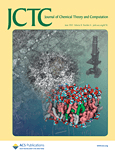
Journal of Chemical Theory and Computation
Pioneering Insights in Chemical ComputationThe Journal of Chemical Theory and Computation, published by the American Chemical Society, stands at the forefront of the multidisciplinary fields of computational chemistry and computer science applications. With an impressive impact factor and ranking in the top quartile (Q1) in both Physical and Theoretical Chemistry and Computer Science Applications, this journal serves as a vital platform for researchers and professionals seeking to publish cutting-edge research on computational methodologies and innovative theoretical approaches. Spanning from 2005 to 2024, the journal aims to disseminate high-quality studies that advance understanding of molecular systems and the development of computational techniques. Its esteemed reputation is reflected in its robust metrics, ranking #23 in Physical and Theoretical Chemistry and #101 in Computer Science Applications by Scopus, showcasing its significant influence in the academic community. While it does not currently offer open access, the journal remains accessible to a wide audience, making it an essential resource for those engaged in the evolving landscape of chemical theory and computation.
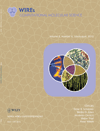
Wiley Interdisciplinary Reviews-Computational Molecular Science
Connecting Computational Methods with Molecular BreakthroughsWiley Interdisciplinary Reviews: Computational Molecular Science is a premier journal published by WILEY, dedicated to the intersection of computational techniques and molecular science. Boasting an impressive impact factor and consistently ranking in the Q1 category across several key disciplines including Biochemistry, Computational Mathematics, Computer Science Applications, Materials Chemistry, and Physical and Theoretical Chemistry, this journal plays a crucial role in disseminating high-quality research that bridges multiple fields. With its focus on providing a platform for interdisciplinary dialogue and innovative computational solutions, it serves as an essential resource for researchers, professionals, and students eager to push the boundaries of molecular science. While the journal does not currently offer open access, it remains a vital conduit for scholarly communication, fostering advancements in understanding molecular interactions through computational methods. The journal is based in the United States, contributing to its global outreach and impact in the scientific community.

CCS Chemistry
Elevating the Dialogue in Chemistry Through Open ScholarshipCCS Chemistry, published by the esteemed Chinese Chemical Society, is a leading open-access journal dedicated to advancing the field of chemistry. Since its inception in 2019, the journal has rapidly gained recognition, achieving a remarkable impact factor that places it in the prestigious Q1 category in Chemistry (Miscellaneous) as of 2023. With a Scopus ranking of #41 out of 408 in General Chemistry, CCS Chemistry represents the top 10th percentile in its category, reflecting its commitment to high-quality research and innovation. The journal serves as a vital platform for researchers and professionals to share their findings, showcase cutting-edge methodologies, and engage with the latest developments in various chemistry subfields. Accessible to a global audience, CCS Chemistry ensures that groundbreaking research is available without barriers, making it an indispensable resource for students and academics aiming to stay at the forefront of chemical sciences. For further details, submissions, and access to published articles, please visit the journal's website.
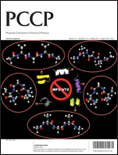
PHYSICAL CHEMISTRY CHEMICAL PHYSICS
Advancing the Frontiers of Physical Chemistry and Chemical PhysicsPhysical Chemistry Chemical Physics is a premier interdisciplinary journal published by the Royal Society of Chemistry, dedicated to advancing the fields of physical chemistry and chemical physics. With an impressive impact factor and categorized in the Q2 quartiles for both Physical and Theoretical Chemistry and Physics and Astronomy, this journal serves as a vital platform for the dissemination of high-quality research findings from 1999 through 2024. Based in the United Kingdom, the journal is committed to providing open access to its articles, enhancing the visibility and accessibility of research to a global audience. Researchers, professionals, and students alike are encouraged to contribute to this esteemed journal, ensuring impactful discussions and significant advancements in the understanding of chemical and physical phenomena. With strong Scopus rankings underscoring its relevance, Physical Chemistry Chemical Physics stands out as an essential resource for specialists striving to innovate and excel within these dynamic fields.

ACS Physical Chemistry Au
Empowering the global community with accessible research.ACS Physical Chemistry Au, published by the American Chemical Society, is a pioneering open-access journal that provides a dynamic platform for researchers and professionals in the field of physical chemistry and its interdisciplinary connections. Since its inception in 2021, the journal has made significant strides in disseminating high-quality research, evidenced by its impressive standings in various categories, including Q1 rankings in Chemistry (miscellaneous), Computational Theory and Mathematics, and Physical and Theoretical Chemistry as of 2023. With a commitment to enhancing the visibility and accessibility of scholarly work, ACS Physical Chemistry Au offers a robust Open Access model, ensuring that groundbreaking research is freely available to a global audience. The journal serves as an essential resource for researchers, students, and practitioners seeking to advance knowledge in computational theory, physical chemistry, and their applied sciences. With an ISSN of N/A and an E-ISSN of 2694-2445, the journal is poised to make a lasting impact in the academic community.